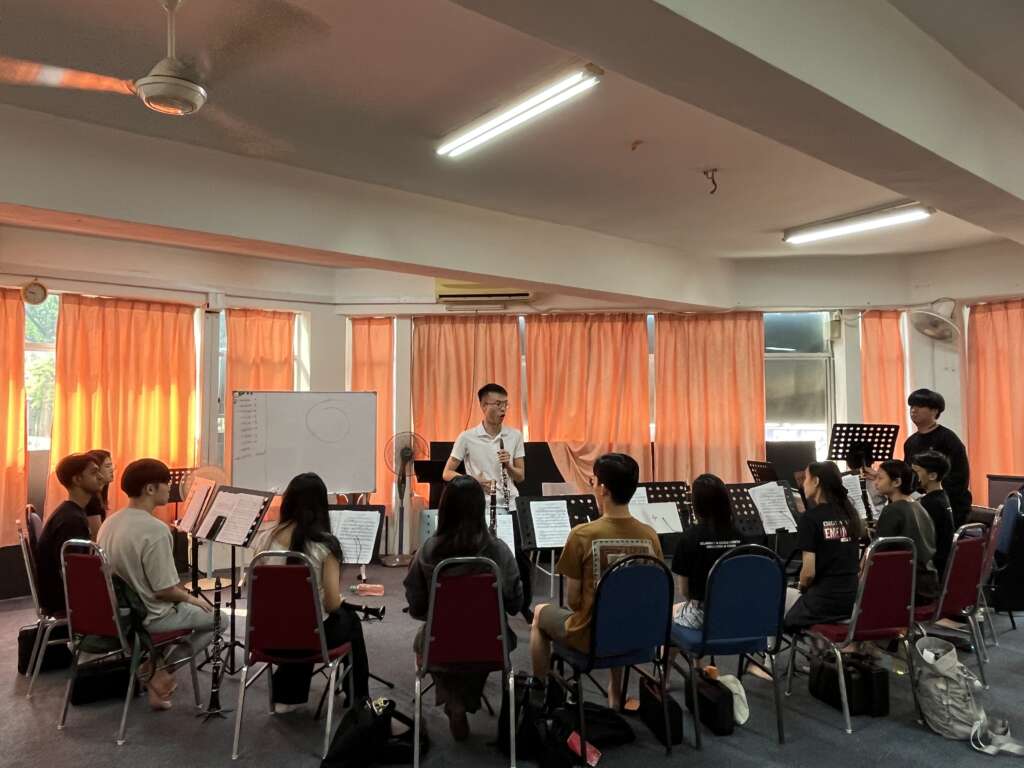SKOC Clarinet Workshop & Masterclass
- Selangor Kuala Lumpur Orchestra & Choir (SKOC)
- 2024

Warming Up with Octaves Slurred Long Tones: Start with the lowest E, then middle E, then high E, and reverse. 4 counts each. Chromatically next will be low F, and so forth until you start with middle E, then high E, then double high E, and reverse. Balancing the range of the notes is crucial too – low notes being louder, and high notes being softer. Whether you are playing with “Air or Air Pressure”: Using the throat notes like Open G, Ab, A and Bb to sound its higher harmonics by blowing with air pressure. Notice your tongue will be somewhat in a curved position. Alternate Fingerings: There are left and right keys for your pinky fingers that have the same engagement of keys, like E/B and F/C, F#/C#. Knowing how to use which option wisely will set up your technical skill. Adding additional keys closed, to adjust intonation and seamless transition from Chalumeau register to Clarion register. In addition, the Bb/Eb key also has at least 3 multiple fingerings for different scenarios. And 1 last bit, I always prefer to use the Fork F#/B than the middle finger. Expression in Volume: Dynamics aren’t about playing soft or loud. Dynamics are about feeling soft or loud. Express your feelings into the notes. Sing it through your soul. Only then your audience will share the same moment as you wanted to present. Musicality & Musicianship: Rubato at the end of pieces to indicate the piece has come to an end. This also attracts your audience’s attention (if they have already lost focus in your performance, or feeling sleepy). Capturing one’s attention takes unconventional ways, like speeding up or gradually slowing down, than playing a straight tempo for 3 minutes. |


